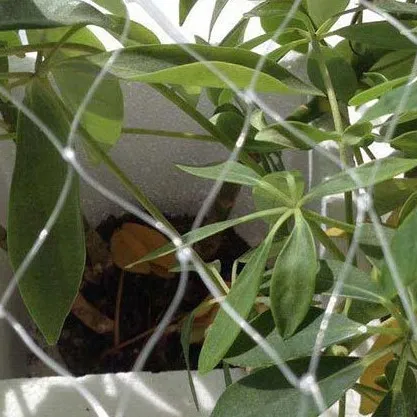-
 Afrikaans
Afrikaans -
 Albanian
Albanian -
 Amharic
Amharic -
 Arabic
Arabic -
 Armenian
Armenian -
 Azerbaijani
Azerbaijani -
 Basque
Basque -
 Belarusian
Belarusian -
 Bengali
Bengali -
 Bosnian
Bosnian -
 Bulgarian
Bulgarian -
 Catalan
Catalan -
 Cebuano
Cebuano -
 China
China -
 Corsican
Corsican -
 Croatian
Croatian -
 Czech
Czech -
 Danish
Danish -
 Dutch
Dutch -
 English
English -
 Esperanto
Esperanto -
 Estonian
Estonian -
 Finnish
Finnish -
 French
French -
 Frisian
Frisian -
 Galician
Galician -
 Georgian
Georgian -
 German
German -
 Greek
Greek -
 Gujarati
Gujarati -
 Haitian Creole
Haitian Creole -
 hausa
hausa -
 hawaiian
hawaiian -
 Hebrew
Hebrew -
 Hindi
Hindi -
 Miao
Miao -
 Hungarian
Hungarian -
 Icelandic
Icelandic -
 igbo
igbo -
 Indonesian
Indonesian -
 irish
irish -
 Italian
Italian -
 Japanese
Japanese -
 Javanese
Javanese -
 Kannada
Kannada -
 kazakh
kazakh -
 Khmer
Khmer -
 Rwandese
Rwandese -
 Korean
Korean -
 Kurdish
Kurdish -
 Kyrgyz
Kyrgyz -
 Lao
Lao -
 Latin
Latin -
 Latvian
Latvian -
 Lithuanian
Lithuanian -
 Luxembourgish
Luxembourgish -
 Macedonian
Macedonian -
 Malgashi
Malgashi -
 Malay
Malay -
 Malayalam
Malayalam -
 Maltese
Maltese -
 Maori
Maori -
 Marathi
Marathi -
 Mongolian
Mongolian -
 Myanmar
Myanmar -
 Nepali
Nepali -
 Norwegian
Norwegian -
 Norwegian
Norwegian -
 Occitan
Occitan -
 Pashto
Pashto -
 Persian
Persian -
 Polish
Polish -
 Portuguese
Portuguese -
 Punjabi
Punjabi -
 Romanian
Romanian -
 Russian
Russian -
 Samoan
Samoan -
 Scottish Gaelic
Scottish Gaelic -
 Serbian
Serbian -
 Sesotho
Sesotho -
 Shona
Shona -
 Sindhi
Sindhi -
 Sinhala
Sinhala -
 Slovak
Slovak -
 Slovenian
Slovenian -
 Somali
Somali -
 Spanish
Spanish -
 Sundanese
Sundanese -
 Swahili
Swahili -
 Swedish
Swedish -
 Tagalog
Tagalog -
 Tajik
Tajik -
 Tamil
Tamil -
 Tatar
Tatar -
 Telugu
Telugu -
 Thai
Thai -
 Turkish
Turkish -
 Turkmen
Turkmen -
 Ukrainian
Ukrainian -
 Urdu
Urdu -
 Uighur
Uighur -
 Uzbek
Uzbek -
 Vietnamese
Vietnamese -
 Welsh
Welsh -
 Bantu
Bantu -
 Yiddish
Yiddish -
 Yoruba
Yoruba -
 Zulu
Zulu
agriculture shade net
The Importance of Shade Nets in Agriculture
Agriculture is an essential pillar of global food security, and as the world population continues to grow, the demand for efficient farming practices becomes increasingly urgent. One practical solution that has emerged in recent years is the use of shade nets, which play a significant role in enhancing agricultural productivity. This article delves into the various advantages of shade nets and explores their applications in modern farming.
Shade nets, made from high-density polyethylene, are designed to provide partial protection to crops from excessive sunlight, wind, and pests. Their primary function is to filter sunlight while allowing sufficient light and air to reach the plants. By controlling the amount of sunlight that crops receive, shade nets create a stable microclimate that can significantly benefit plant growth and development.
The Importance of Shade Nets in Agriculture
In addition to temperature regulation, shade nets offer protection against harsh weather conditions. They provide a barrier that shields crops from strong winds, heavy rain, and hail, reducing physical damage and loss. This not only protects the crops but also minimizes the need for additional investments in infrastructure, such as permanent greenhouses or other extensive protective measures.
agriculture shade net

Furthermore, shade nets help to reduce water evaporation from the soil. In arid and semi-arid regions, where water scarcity is a significant concern, retaining soil moisture is critical. By providing shade, these nets can decrease the temperature of the soil surface, thereby preventing excessive evaporation. Consequently, farmers can save on irrigation costs, making their operations more sustainable and environmentally friendly.
Another significant benefit of shade nets is their ability to act as a deterrent against pests and insects. The netting creates a physical barrier that can prevent various pests from reaching the crops, reducing the need for chemical pesticides. This not only enhances the safety of the produce but also supports organic farming practices, which have gained popularity among environmentally conscious consumers.
In terms of crop diversity, shade nets allow farmers to cultivate a wider variety of plants in areas that would otherwise be unsuitable for certain species due to extreme climatic conditions. For instance, shade-loving plants, such as certain herbs and leafy greens, thrive under partial shade, enabling farmers to diversify their crops and potentially tap into new markets.
The economic implications of using shade nets in agriculture are also noteworthy. While there is an initial investment in purchasing and installing shade nets, the long-term benefits, including higher yields, reduced water usage, and lower pest-related losses, often outweigh these costs. On a broader scale, increased agricultural productivity can lead to enhanced food security and contribute positively to local economies.
In conclusion, shade nets represent a versatile and effective tool in modern agriculture. By providing protection from extreme weather, conserving water, managing temperatures, and controlling pests, they help farmers enhance productivity and sustainability. As the agricultural sector continues to face challenges posed by climate change and population growth, the adoption of innovative solutions such as shade nets will be crucial in ensuring the future of food security.
-
Shipping Plastic Bags for Every NeedNewsJul.24,2025
-
Safety Netting: Your Shield in ConstructionNewsJul.24,2025
-
Plastic Mesh Netting for Everyday UseNewsJul.24,2025
-
Nylon Netting for Every UseNewsJul.24,2025
-
Mesh Breeder Box for Fish TanksNewsJul.24,2025
-
Expanded Steel Mesh Offers Durable VersatilityNewsJul.24,2025











